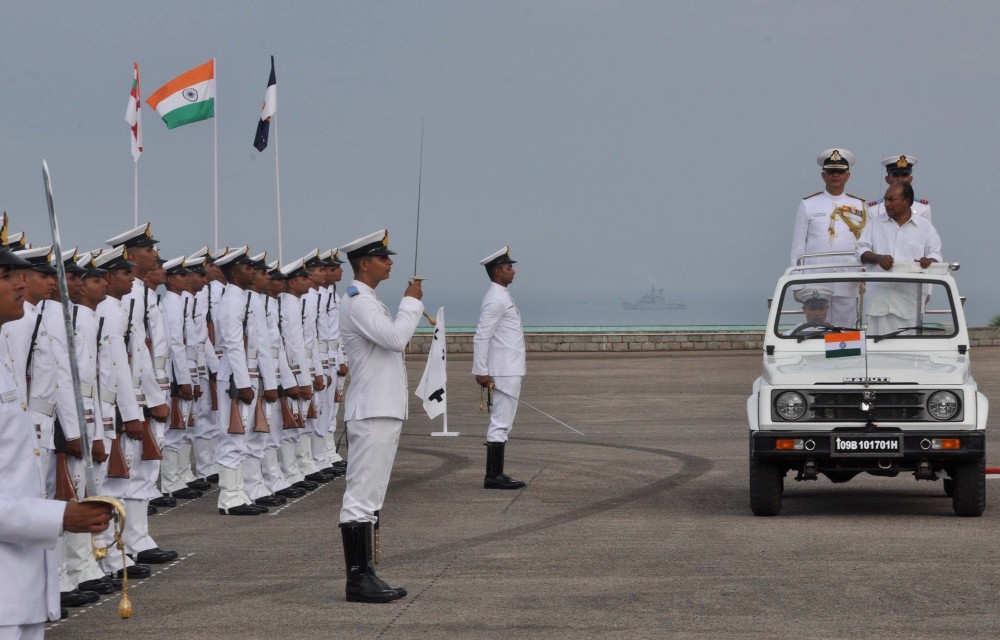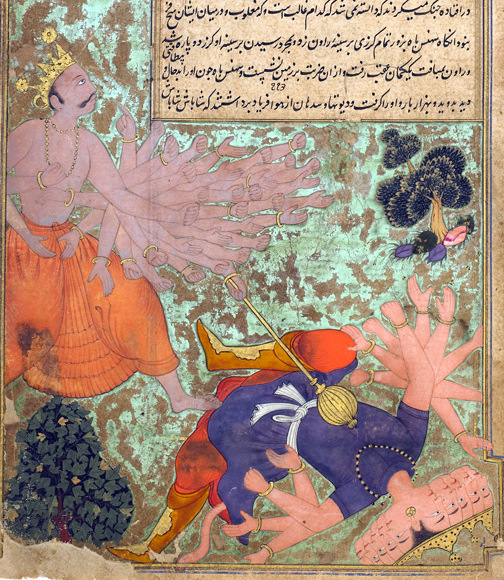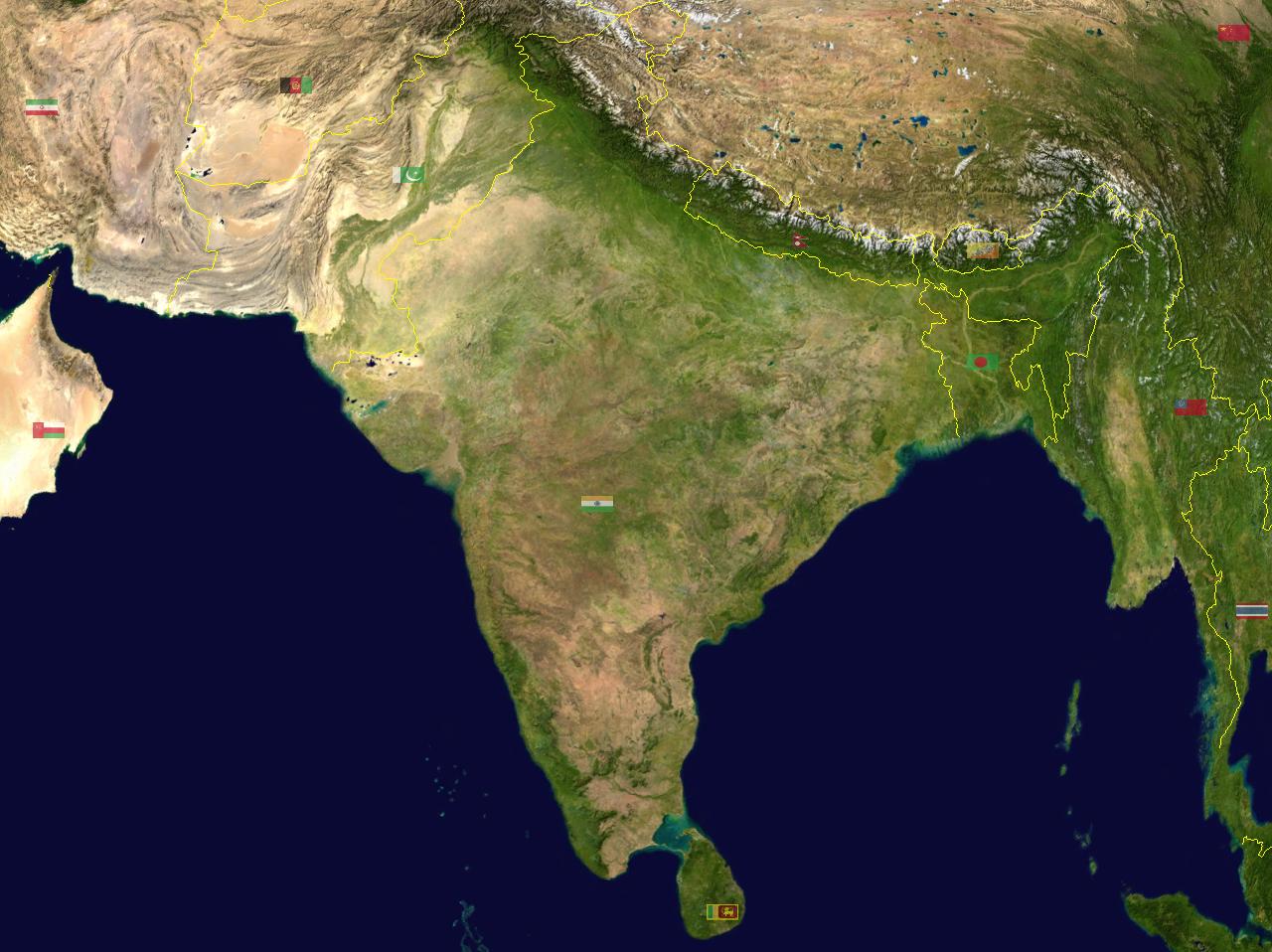|
Mushika-vamsha
''Mushika-vamsha'' ( IAST: Mūṣika-vaṃśa mahā-kāvyam) is a Sanskrit dynastic chronicle composed in 11th century by poet Atula.Thapar, Romila'', The Penguin History of Early India: From the Origins to AD 1300.'' Penguin Books, 2002. 394-95.Narayanan, M. G. S. ''Perumāḷs of Kerala.'' Thrissur (Kerala): CosmoBooks, 2013. 178-179. It narrates the legendary history of the Mushika dynasty, which ruled the northern part of the present-day Kerala state of India. The chronicle moves from mythological beginnings of the founding ancestors to more authentic genealogical history in later ''sargas.'' Several kings mentioned in the kavya, such as Validhara Vikrama Rama (c. 929 AD),Narayanan, M. G. S. ''Perumāḷs of Kerala.'' Thrissur (Kerala): CosmoBooks, 2013. 180-181. JayamaniNarayanan, M. G. S. ''Perumāḷs of Kerala.'' Thrissur (Kerala): CosmoBooks, 2013. 480-81. and Kantan Karivarman (Srikantha Kartha) (both c. 1020 AD)Narayanan, M. G. S. ''Perumāḷs of Kerala.'' Thrissur ( ... [...More Info...] [...Related Items...] OR: [Wikipedia] [Google] [Baidu] |
Ezhimala Hill
Ezhimala, a hill reaching a height of , is located near Payyanur, in Kannur district of Kerala, south India. It is a part of a conspicuous and isolated cluster of hills, forming a promontory, north of Kannur (Cannanore). The Indian Naval Academy at Ezhimala is the Asia's largest, and the world's third-largest, naval academy. As the former capital of the ancient Kolathunadu Kingdom of the Mushikas, Ezhimala is considered to be an important historical site. A flourishing seaport and center of trade around the beginning of the Common Era, it was also one of the major battlefields of the Chola- Chera Wars, in the 11th century. It is believed by some that Buddha had visited Ezhimala. The Kolathunadu (Kannur) Kingdom at the peak of its power, reportedly extended from Netravati River (Mangalore) in the north to Korapuzha (Kozhikode) in the south with Arabian Sea on the west and Kodagu hills on the eastern boundary, also including the isolated islands of Lakshadweep in the Arabian Sea ... [...More Info...] [...Related Items...] OR: [Wikipedia] [Google] [Baidu] |
Mushika Dynasty
Mushika dynasty, also spelled Mushaka, was a minor dynastic power that held sway over the region in and around Mount Ezhi (Ezhimala) in present-day North Malabar, Kerala, India. The country of the Mushikas, ruled by an ancient lineage of the Hehaya clan of the same name, appears in early historic (pre-Pallava) south India.Gurukkal, Rajan. “DID STATE EXIST IN THE PRE-PALLAVAN TAMIL REGION.” ''Proceedings of the Indian History Congress'', vol. 63, 2002, pp. 138–150. Early Tamil poems contain several references to the exploits of Nannan of Ezhimalai. Nannan was known as a great enemy of the pre-Pallava Chera chieftains.Narayanan, M. G. S. ''Perumāḷs of Kerala.'' Thrissur (Kerala): CosmoBooks, 2013. 195. The clan also had matrimonial alliances with the Chera, Pandya and Chola chieftains. The Kolathunadu (Kannur) Kingdom, which was the descendant of Mushika dynasty, at the peak of its power, reportedly extended from Netravati River (Mangalore) in the north to Korapuzha (Kozh ... [...More Info...] [...Related Items...] OR: [Wikipedia] [Google] [Baidu] |
Heheya Kingdom
The Heheya Kingdom (also known as Haihaya, Haiheya, Heiheya _sa.html" ;"title="nowiki/> sa">हैहय was a kingdom ruled by the Yadava people, who claimed to be descended from Yadu, a legendary king of Chandravamsha lineage. One of the most well known Haihaya rulers was Kartavirya Arjuna. It is believed that the Kingdom was involved with a number of conflicts with neighboring kingdoms, and it is believed that it was ultimately defeated by the Bhargava leader Parashurama. The capital of the Heheya Kingdom was Mahishmati, located on the banks of the Narmada River in present-day Madhya Pradesh. Haihaya clans The Haihayas were an ancient confederacy of five ''gana''s (clans), who claimed their common ancestry from Yadu. According to the ''Harivamsha Purana'' (34.1898), Haihaya was the great-grandson of Yadu and grandson of Sahasrajit.Pargiter, F.E. (1972) 922 ''Ancient Indian Historical Tradition'', Delhi: Motilal Banarsidass, p.87. In the ''Vishnu Purana'' (IV.11), al ... [...More Info...] [...Related Items...] OR: [Wikipedia] [Google] [Baidu] |
IAST
The International Alphabet of Sanskrit Transliteration (IAST) is a transliteration scheme that allows the lossless romanisation of Indic scripts as employed by Sanskrit and related Indic languages. It is based on a scheme that emerged during the nineteenth century from suggestions by Charles Trevelyan, William Jones, Monier Monier-Williams and other scholars, and formalised by the Transliteration Committee of the Geneva Oriental Congress, in September 1894. IAST makes it possible for the reader to read the Indic text unambiguously, exactly as if it were in the original Indic script. It is this faithfulness to the original scripts that accounts for its continuing popularity amongst scholars. Usage Scholars commonly use IAST in publications that cite textual material in Sanskrit, Pāḷi and other classical Indian languages. IAST is also used for major e-text repositories such as SARIT, Muktabodha, GRETIL, and sanskritdocuments.org. The IAST scheme represents more than a ... [...More Info...] [...Related Items...] OR: [Wikipedia] [Google] [Baidu] |
Agastya
Agastya ( kn, ಅಗಸ್ತ್ಯ, ta, அகத்தியர், sa, अगस्त्य, te, అగస్త్యుడు, ml, അഗസ്ത്യൻ, hi, अगस्त्य) was a revered Indian sage of Hinduism. In the Indian tradition, he is a noted recluse and an influential scholar in diverse languages of the Indian subcontinent. He and his wife Lopamudra are the celebrated authors of hymns 1.165 to 1.191 in the Sanskrit text ''Rigveda'' and other Vedic literature. Agastya is considered to be the father of Siddha medicine. Agastya appears in numerous itihasas and Puranas including the major ''Ramayana'' and ''Mahabharata''. He is one of the seven most revered rishis (the Saptarishi) in the Vedic texts, and is revered as one of the Tamil Siddhar in the Shaivism tradition, who invented an early grammar of the Old Tamil language, Agattiyam, playing a pioneering role in the development of Tampraparniyan medicine and spirituality at Saiva centres in pro ... [...More Info...] [...Related Items...] OR: [Wikipedia] [Google] [Baidu] |
Solar Dynasty
The Solar dynasty (IAST: Suryavaṃśa or Ravivaṃśa in Sanskrit) or the Ikshvaku dynasty was founded by the legendary king Ikshvaku.Geography of Rigvedic India, M.L. Bhargava, Lucknow 1964, pp. 15-18, 46-49, 92-98, 100-/1, 136 The dynasty is also known as ("Solar dynasty" or "Descendants of the Sun") which means that this dynasty prays to the Sun as their God and their originator (the Gayatri Mantra is a prayer offered to the Sun God as the Sun is the main deity of the Solar Dynasty), and along with Lunar dynasty comprises one of the main lineages of the Kshatriya Varna. The first ''Tirthankara'' of Jainism, Rishabhdeva himself was King Ikshvaku. Further, 21 Tirthankaras of Jainism were born in this dynasty. According to Buddhist texts and tradition, Gautama Buddha descended from this dynasty. Many later kings of the Indian subcontinent claimed to be of Suryavamsha descent. The important personalities belonging to this royal house are Mandhatri, Muchukunda, Ambarisha, B ... [...More Info...] [...Related Items...] OR: [Wikipedia] [Google] [Baidu] |
Kerala Kingdom
Keralas or Udra Keralas were a dynasty mentioned in Sanskrit epics of ancient India. In the Mahabharata, the Keralian empire took part in the Kurukshetra War by feeding both armies. According to the Puranas, the navigators and survivors of the Yadavas of Dwaraka also settled in Kerala later. Some remnants of the Naga culture are also found here. This Kerala Kingdom has been identified with the Chera kingdom, which existed from the 5th century BCE to the 12th century CE in present-day Kerala state and Tamil Nadu in South India. The Pandyas, Cheras and the Cholas were mentioned in Tamil literature (consisting of ''Silappatikaram'', ''Tirukkural'' etc.), complementing their mention in the existing Sanskrit literature (constituted by the Puranas, Vedas, Ramayana and the Mahabharata). Legend of King Mahabali Remembrance of King Mahabali The modern people of Kerala, Karnataka along with other southern states of India, celebrate the King Mahabali who it is believed, was the Empe ... [...More Info...] [...Related Items...] OR: [Wikipedia] [Google] [Baidu] |
Sannyasa
''Sannyasa'' (Sanskrit: संन्यास; IAST: ), sometimes spelled Sanyasa (सन्न्यास) or Sanyasi (for the person), is life of renunciation and the fourth stage within the Hindu system of four life stages known as '' Ashramas'', with the first three being Brahmacharya (bachelor student), Grihastha (householder) and Vanaprastha (forest dweller, retired). Sannyasa is traditionally conceptualized for men or women in late years of their life, but young brahmacharis have had the choice to skip the householder and retirement stages, renounce worldly and materialistic pursuits and dedicate their lives to spiritual pursuits. Sannyasa is a form of asceticism, is marked by renunciation of material desires and prejudices, represented by a state of disinterest and detachment from material life, and has the purpose of spending one's life in peaceful, spiritual pursuits. An individual in Sanyasa is known as a ''Sannyasi'' (male) or ''Sannyasini'' (female) in Hinduis ... [...More Info...] [...Related Items...] OR: [Wikipedia] [Google] [Baidu] |
Ashvamedha
The Ashvamedha ( sa, अश्वमेध, aśvamedha, translit-std=IAST) was a horse sacrifice ritual followed by the Śrauta tradition of Vedic religion. It was used by ancient Indian kings to prove their imperial sovereignty: a horse accompanied by the king's warriors would be released to wander for a year. In the territory traversed by the horse, any rival could dispute the king's authority by challenging the warriors accompanying it. After one year, if no enemy had managed to kill or capture the horse, the animal would be guided back to the king's capital. It would be then sacrificed, and the king would be declared as an undisputed sovereign. The best-known text describing the sacrifice is the ''Ashvamedhika Parva'' ( sa, अश्वमेध पर्व), or the "Book of Horse Sacrifice," the fourteenth of eighteen books of the Indian epic poem ''Mahabharata''. Krishna and Vyasa advise King Yudhishthira to perform the sacrifice, which is described at great length. Th ... [...More Info...] [...Related Items...] OR: [Wikipedia] [Google] [Baidu] |
Chakravartin
A ''chakravarti'' ( sa, चक्रवर्तिन्, ''cakravartin''; pi, cakkavatti; zh, 轉輪王, ''Zhuǎnlúnwáng'', "Wheel-Turning King"; , ''Zhuǎnlún Shèngwáng'', "Wheel-Turning Sacred King"; ja, 転輪王, ''Tenrin'ō'' or , ''Tenrinjōō'') is an ideal (or idealized) universal ruler, in Indian history, the history, Dharmic religion, religion, and mythologies of India. The concept is present in the cultural traditions Vedic mythology, of Vedic, Hindu mythology, Hindu, Jainism, Jain and Buddhist mythology, Buddhist narrative myths and lore. There are three types of chakravarti: ''chakravala chakravarti'', a king who rules over all four of the continents (i.e., a universal monarch); ''dvipa chakravarti'', a ruler who governs only one of those continents; and ''pradesha chakravarti'', a monarch who leads the people of only a part of a continent, the equivalent of a local king. Dvipa chakravarti is particularly one who rules the entire Indian subcontinent (as ... [...More Info...] [...Related Items...] OR: [Wikipedia] [Google] [Baidu] |
Names Of India
The Republic of India has two principal short names, each of which is historically significant, "India" and "Bharata". A third name, "Hindustān", is sometimes an alternative name for the region comprising most of the modern Indian states of the subcontinent when Indians speak among themselves. The usage of "Bhārat", "Hindustān", or "India" depends on the context and language of conversation. "Bhārat", the name for India in several Indian languages, is variously said to be derived from the name of either, King Dhashrath's son Bharat, Dushyanta's son Bharata or Rishabha's son Bharata. At first the name Bhārat referred only to the western part of the Ganges in North India, but was later more broadly applied to the Indian subcontinent and the region of Greater India, as was the name "India". Today it refers to the contemporary Republic of India located therein. The name "India" is originally derived from the name of the river Sindhu (Indus River) and has been in use in Gre ... [...More Info...] [...Related Items...] OR: [Wikipedia] [Google] [Baidu] |
Vindhyas
The Vindhya Range (also known as Vindhyachal) () is a complex, discontinuous chain of mountain ridges, hill ranges, highlands and plateau escarpments in west-central India. Technically, the Vindhyas do not form a single mountain range in the geological sense. The exact extent of the Vindhyas is loosely defined, and historically, the term covered a number of distinct hill systems in central India, including the one that is now known as the Satpura Range. Today, the term principally refers to the escarpment and its hilly extensions that runs north of and roughly parallel to the Narmada River in Madhya Pradesh. Depending on the definition, the range extends up to Gujarat in the west, Uttar Pradesh and Bihar in the north, and Chhattisgarh in the east. The Vindhyas have a great significance in Indian mythology and history. Several ancient texts mention the Vindhyas as the southern boundary of the ''Āryāvarta'', the territory of the ancient Indo-Aryan peoples. Although today Ind ... [...More Info...] [...Related Items...] OR: [Wikipedia] [Google] [Baidu] |









